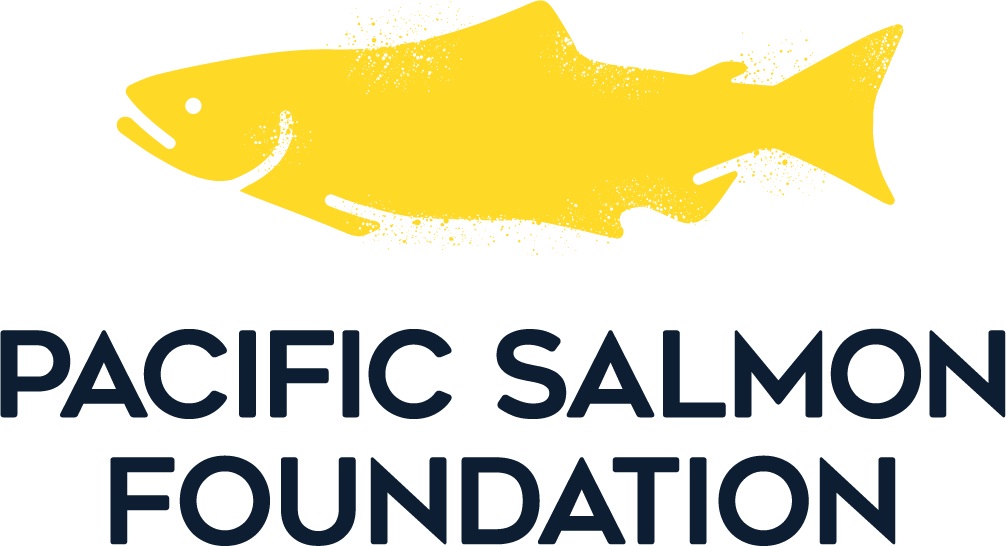Our Coho Are Coming Home
Some exciting news in Shelly Creek! Some of the adult Coho observed spawning in Shelly Creek right now were PIT tagged as smolts in our smolt trap while on their migration to the ocean. Now they're back!
You may have read in a previous article, that for the past three years, the BC Conservation Foundation (BCCF) has been PIT tagging the Coho Salmon smolts we capture in our smolt trap in Shelly Creek as part of the Bottlenecks to Marine Survival Program. A “survival bottleneck” is an event that drastically reduces the size of a population. The program is investigating the cause of recent drastic declines in Chinook, Coho, and Steelhead populations in the Salish Sea using Passive Integrated Transponder (PIT) tags, antennae arrays, and scanning technology to track individual fish to determine their fate. PIT tagging and installation of antenna arrays on east Vancouver Island is happening in the major river systems, from the Quinsam to Goldstream River and includes the Englishman.
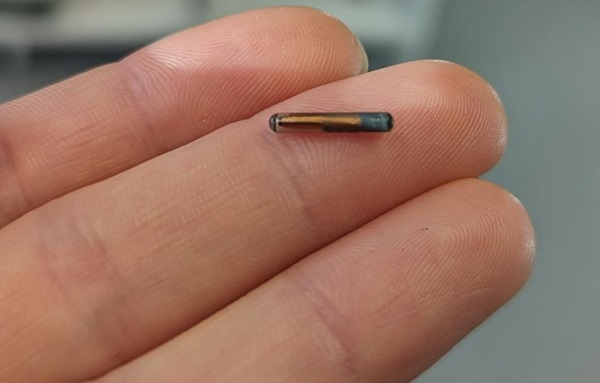
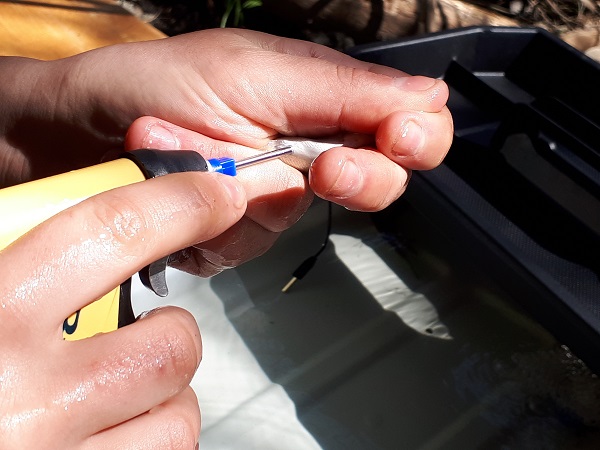
PIT Tag Implanting PIT Tag in a Shelly Creek fish
Each PIT tag contains a code with information about an individual fish, like where and when it was tagged, its length, and locations of other arrays that have detected the tag, like the Englishman River array near the estuary. The array picks up the code from a PIT tag (like the chip in your bank card) and stores it in a data logger. In 2021, MVIHES purchased 2 antenna arrays from BCCF for our own project: tracking the movements of PIT tagged Cutthroat Trout in Shelly Creek Park (at Hamilton Rd and Corfield St North).
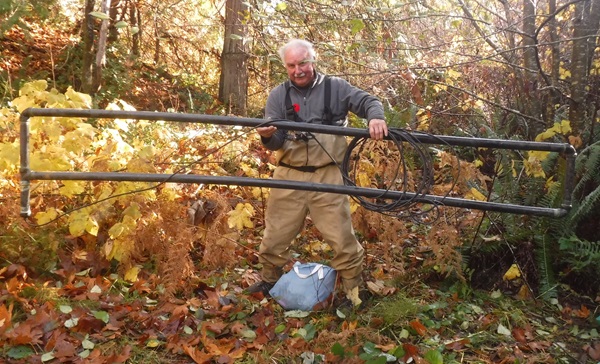
On November 7, and with the help of BCCF, we installed one of our arrays in Shelly Creek to determine if any of the Coho observed spawning in the restored creek channel on Shelly Farm are tagged. Volunteer Rick Walz is seen in the right-hand photo holding the antenna array which is housed inside a PVC pipe to keep it dry.
The installation required digging out a small cross-section of creek bottom so the array can lay flat and be fully submerged. Sandbags filled by MVIHES volunteers Shelley Goertzen, Maggie Estok, and Dick Dobler were added on top of the array to keep it in place (see photos below).
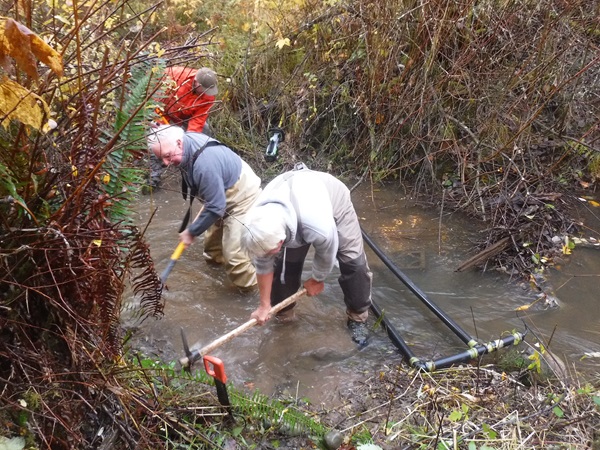
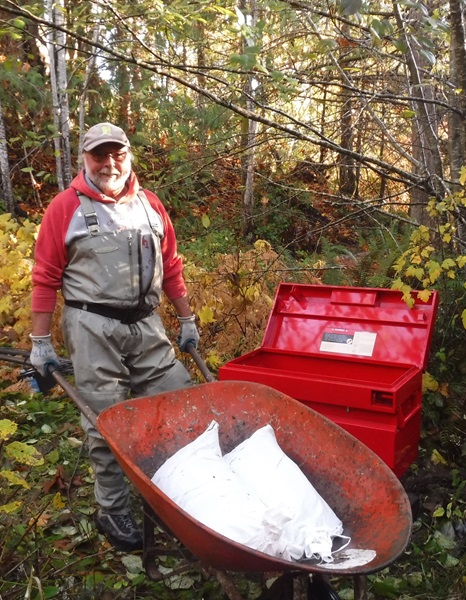
Making room for the array. Front to back: Dick Dobler, Rick Walz, Pete Law Sandbag delivery by Terry Baum
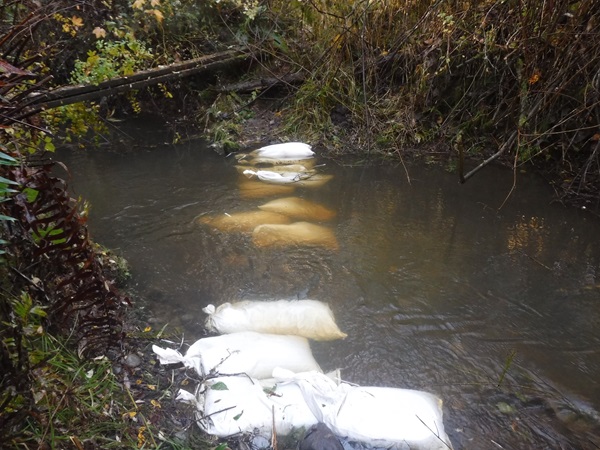
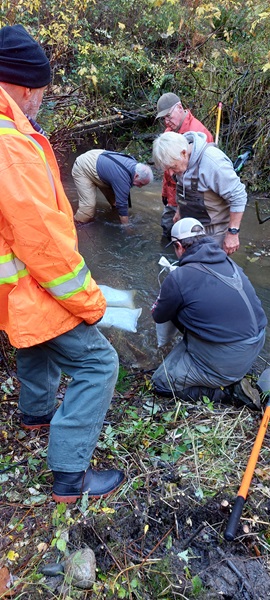
Sandbag Conga Line. Front to back: Bob Williams, Installed array secured by sandbags Thomas Negrin (BCCF), Dick Dobler, Pete Law, Rick Walz
Thomas Negrin and Ally Badger of BCCF connected our array to a datalogger. You may remember Ally as the VIU student who tracked the movements of the Shelly Creek Park Cutthroat Trout using a handheld scanner and the antenna arrays for her undergrad thesis.
The antenna array and data collector are powered by four car batteries that are changed out by volunteers with a second set of charged batteries every week. Data is downloaded from the datalogger onto a laptop and sent to BCCF by a volunteer.
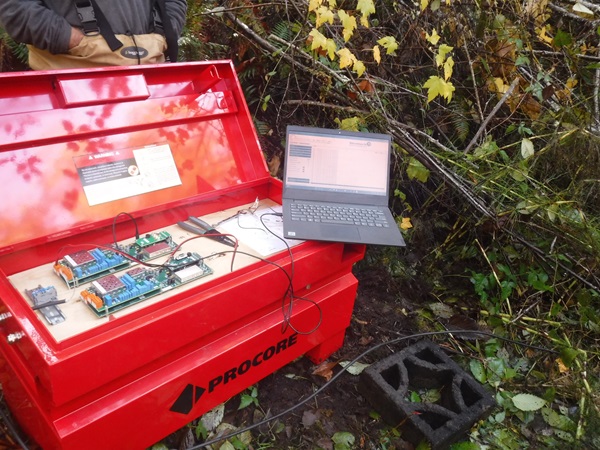
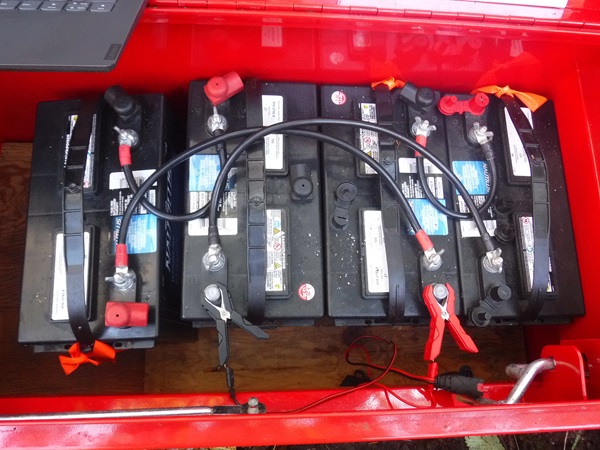
Series of 4 car batteries for powering antenna array and data logger Datalogger connected to laptop for downloading
Our first download on November14, showed that seven PIT tagged adults crossed the array on November 11 and 12. The fish had been PIT tagged in May 2022. I know, the math doesn't work. If Coho spawn when they are 3 year olds and these fish were tagged as one year old smolts in 2022, doesn't that make them 2 year olds? I have learned that their age is determined by 1 year spent in freshwater plus the number of summers spent in the ocean, not the number of years in the ocean. They grow up so fast, don't they?
An interesting tidbit discovered through the Marine Survival program is that some spawners stray from their home creeks. Data collected by BCCF shows that some of the Coho entering the Englishman River are strays from Little and Big Qualicum Rivers, Nanaimo River, and Cowichan River. The little rascals!
Due to the cost of the equipment and its importance to our work, it's being guarded by a gang of Hobbits in a secure location in the Shire, so those thieving Goblins can just forget about searching for it. See, there’s Bilbo Baggins in the photo below, standing between Shelly Goertzen (left) and Maggie Estok (right).
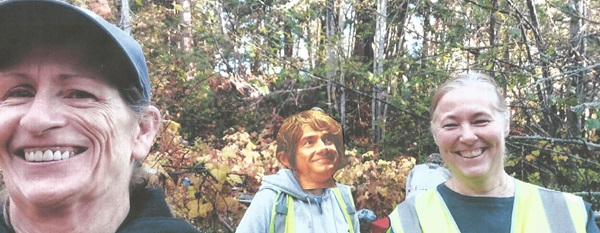
I wonder what our next download will reveal. Stay tuned.
